Microblading Removal: What You Need to Know
Microblading Removal – Microblading is a semi-permanent eyebrow tattooing technique that has seen a surge in popularity for its promise of perfect, low-maintenance eyebrows. However, for reasons as varied as changes in personal style, dissatisfaction with results, or simply the desire to clear the canvas and start fresh, some individuals find themselves seeking microblading removal.
Before you set an appointment for removal, it’s crucial to get a complete understanding of the process. In this comprehensive guide, we’ll walk you through the what, why, and how of microblading removal, ensuring you’re armed with essential information to make the best decision for your beauty journey. Before we look at removal methods, lets take a quick look at Microblading.
Microblading Removal Ancient Origins of Microblading
Microblading is not a new invention. It’s a modern iteration of techniques women (and men) have been using for aesthetic purposes for thousands of years.
Historical Evidence of Eyebrow Enhancements
Historical evidence suggests that people in ancient civilizations, from Pharaonic Egypt to the Mongolian Empire, practiced eyebrow enhancements. In Egypt, it was common to use a mixture of kohl and oil to darken the brows and line the eyes. In other cultures, ashes and natural dyes were used for similar purposes.
Techniques Used in Ancient Civilizations
These ancient procedures were no less intricate than their modern microblading counterparts. Artisans used tools like bone or metal to create fine lines, often with spiritual or ceremonial significance. Eyebrows were a powerful expression of one’s identity and status, leading individuals to great lengths to beautify them.
Understanding Microblading and Its Popularity
Microblading is a form of cosmetic tattooing where a small handheld tool made of several tiny needles is used to add semi-permanent pigment to the skin. The technique aims to create the look of fuller eyebrows. However, results can vary wildly depening upon the skill of the artist.
The Need for Microblading Removal
Microblading isn’t alwyas a perfect match. Common reasons for seeking removal include dissatisfaction with the initial result, changes in personal style, the occurrence of adverse reactions, or the pigment simply not fading as expected. It’s important to note that while microblading is semi-permanent, it’s not entirely without commitment, and removal comes with its own set of considerations. Should an ineperinced artist place the pigmnet deep, the cahnces are that the microblading will be more permanent than expected.
Considerations Before Taking the Plunge
Before you opt for removal, it’s vital to consider a few key points. First, always consult with a professional to discuss your reasons and expectations for removal. They can help you manage expectations and decide if removal is the best path forward. Assessing the condition of the brows and the pigment’s depth will also inform the removal process.
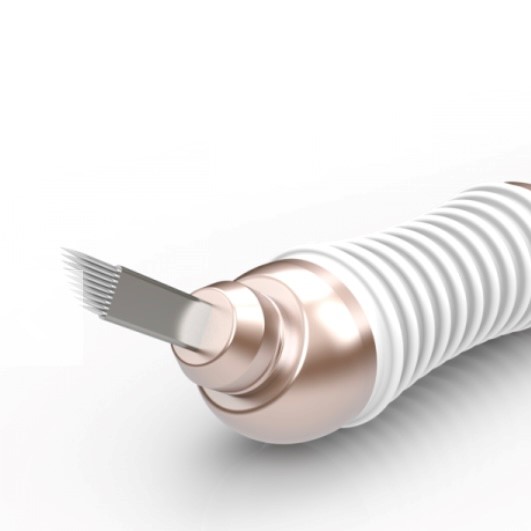
Methods for Microblading Removal
There are a few methods to consider when removing microblading. Each has its own set of benefits and drawbacks, which we’ll explore in depth.
Laser Removal
Laser tattoo removal is a process that uses high-powered lasers to penetrate the skin and break up pigments. Over several sessions, the body’s immune system flushes these fragments away, gradually fading the tattoo. This method is known for its precision and generally safe outcomes.
Laser technology was a game-changer in the arena of tattoo removal. It provided a much-needed precision that abrasive and chemical methods lacked, targeting the unwanted ink while sparing as much of the surrounding skin as possible. It’s a tale of science fiction turned reality, where light became the tool for altering the darkest art.
The advent of Q-switching
The first lasers developed for tattoo removal were Q-switched, a technology that allowed the laser to emit a high-intensity pulse in a very short duration. This selective mode of action, combined with the nanosecond pulses from the laser, could target tattoo pigments with minimal damage to the surrounding tissue, making it the first technology to show potential for effective tattoo removal
Types of Lasers Used for Microblading Removal
The three most common types of lasers used for tattoo removal, including microblading, are:
- Q-switched Ruby Laser: This was the first laser designed to remove tattoos and is effective in treating dark blue and black inks.
- Q-switched Nd:YAG Laser: This versatile tool is effective for a wide range of colours and is often utilized for pigments deeper in the skin, making it a popular choice for microblading removal.
- Q-switched Alexandrite Laser: Known for delivering energy quickly, which can reduce treatment times and patient discomfort, this laser is also effective against a variety of colours.
Laser technology has made significant advancements in recent years, meaning that treatments are more effective and less painful than in the past.
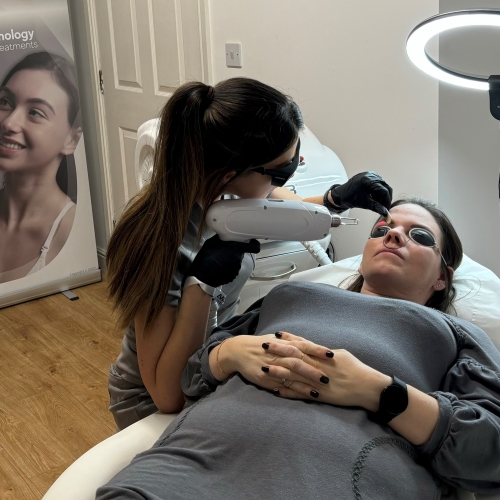
Saline Removal
The saline removal technique involves tattooing a solution of saline and a pigment-lightening formula into the unwanted pigment. Over several sessions, the saline breaks down the ink, allowing the body to absorb and expel it.
Saline removal is less invasive than laser removal and can be an effective method for removing pigments. However, it may also take longer to achieve the desired results.
Manual Removal
Manual removal techniques include cosmetic peels, over-the-counter creams, and exfoliation methods. These are less effective and can be more damaging, particularly to sensitive skin.
Why ND YAG Laser is the Best for Microblading Removal
Microblading, a popular semi-permanent makeup technique that gives the illusion of full, perfectly shaped eyebrows, has seen a significant surge in demand over the last decade. However, along with its popularity comes the need for its reversal. For those seeking to undo the effects of microblading, the choice of the right removal method is crucial. Among various techniques, the ND YAG laser stands out for its efficacy and safety. In this comprehensive guide, we’ll delve into the reasons why ND YAG laser is considered the gold standard for microblading removal.
Unveiling ND YAG Technology
How ND YAG Works
The ND YAG (neodymium-doped yttrium aluminium garnet) laser is a type of non-ablative laser that has been lauded for its ability to safely penetrate the skin to target the pigments of microblading ink. It emits specific wavelengths of light, which are absorbed by the target area without heating the surrounding tissue. This selective photothermolysis breaks down the pigments into smaller particles which the body’s immune system can then naturally eliminate.
Advantages over Alternative Lasers
When compared to other lasers, like the Ruby or Alexandrite lasers, ND YAG proves superior due to its deeper penetration and ability to target a wide spectrum of colours, including blues and blacks. The comprehensive approach makes ND YAG an ideal choice for those with a variety of pigment shades in their microblading.
Microblading Removal – The Power of Precision Pigment Clearing
The Targeted Solution
One of the most significant advantages of ND YAG laser for microblading removal is its precision. The ability to focus on the exact area of the pigment without disturbing the surrounding skin makes the process safer and the results more successful. By creating tiny, controlled wounds within the treated area, the body responds by flushing out the ink over time, resulting in the gradual fading of the microbladed eyebrows.
Minimized Risk of Side Effects
Another key benefit of the precision provided by ND YAG laser is the reduced risk of scarring and hyperpigmentation. Since the laser energy is so finely targeted, there is minimal collateral damage to the surrounding skin. This sets ND YAG laser apart from more invasive methods, such as chemical removal, which can lead to serious side effects if not administered properly.
Tailored to All Tones: The Skin-Color Proof Method
Universality Across Diversities
Because ND YAG lasers can operate at multiple frequencies, they can adjust to various skin tones and types. This versatility allows professionals to tailor the treatment to each client’s individual needs, making it suitable for clients with lighter or darker complexions. As many microblading enthusiasts range in skin type, the ND YAG laser is an inclusive option that ensures safety and efficacy for all.
Safety on Delicate Complexions
The precision and adaptability of ND YAG lasers also make them safe for use on the delicate facial skin. Eyebrows being intricate features, any tool used for correction or removal must be gentle yet highly effective. ND YAG technology ticks both these boxes, offering a safe, economical, and approved method for competent and skilled practitioners.
Fewer Sessions, Faster Results
Rapid Restoration with Regular Removal
ND YAG laser can efficiently reduce the number of sessions required to remove microblading. Traditionally, anywhere from five to eight sessions have been deemed necessary. With the ND YAG laser, two to four sessions are often adequate to achieve the desired level of fading, effectively removing the need to book and attend numerous appointments.
Averting Avoidable Expenses
Reducing the number of sessions required for removal not only saves clients time but also considerable out-of-pocket costs. Each session requires commitment from both the client and technician. By shortening the overall duration of treatment, ND YAG laser ensures a swifter, more cost-effective solution.
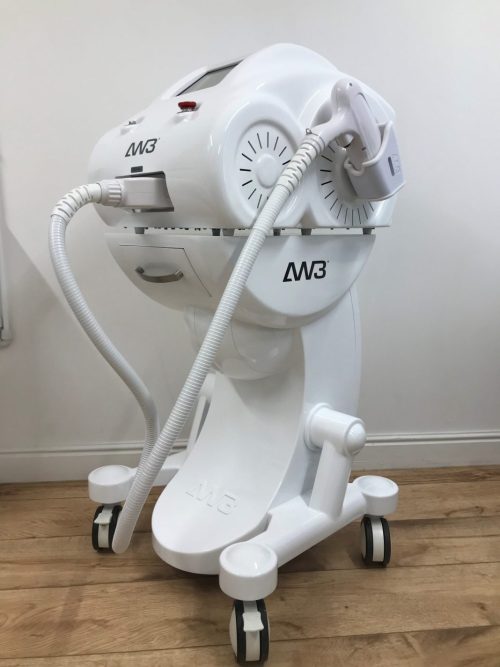
Microblading Removal Comparing Traditional Methods
Cutting Chemically Isn’t the Only Way
Chemical removal methods can be harsh on the skin and are often not as precise as the ND YAG laser. While certain acids, such as glycolic and lactic, can aid in the fading of microblading, they come with an increased risk of burning and scarring. On the other hand, the ND YAG laser method is gradual, gentle, and proven to yield better overall satisfaction.
Lasers Laid Out Side by Side
In contrast to other laser methods, the ND YAG stands out for its safety profile and the ability to treat multiple pigment colours. Lasers like the Ruby or Alexandrite are better suited to other types of pigmentation and are not as effective when the aesthetic intent is to remove, rather than enhance.
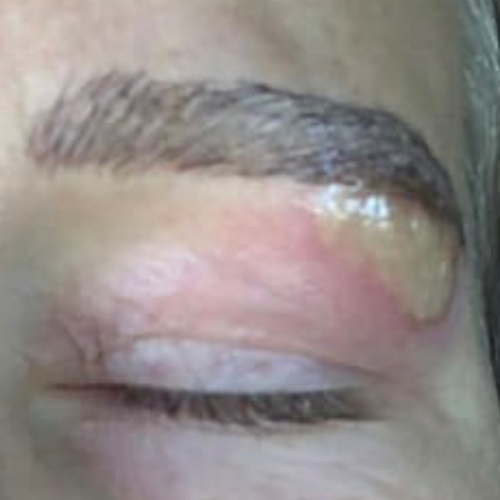
Microblading Removal Potential Risks and Side Effects
As with any cosmetic procedure, there are risks associated with microblading removal. The most common include scarring, increased sensitivity, and uneven pigment removal. To minimize these risks, it’s essential to follow all aftercare instructions provided by your removal specialist.
Aftercare and Recovery
After microblading removal, the treated area is likely to be tender and require special care. Your technician will provide detailed aftercare instructions, which may include keeping the area clean and moisturized, avoiding excessive sun exposure, and refraining from certain activities that could aggravate the skin.
In the days following the removal, you can expect the brow area to be red and inflamed. Over the next several weeks, the pigments will gradually fade as the skin heals.
Microblading Removal: Machine Eyebrows When Microblading Is Gone
What Are Machine Eyebrows?
When precision meets speed, you get the technique known as machine eyebrow enhancement. Unlike traditional microblading, which is done with handheld tools. The machine brow method uses a fine needle attached to a machine that swiftly deposits pigment into the skin. It’s the ideal solution when you’ve had your microblading removed and need an alternative that’s less invasive but still delivers the desired aesthetic.
Precision Brow Techniques – A Focused Approach
Machine eyebrow enhancement is all about precision. It allows the technician to have ultimate control over the depth and dispersal of the pigment, leading to highly customizable, tailored results. Plus, you’re not restricted to just following old microblading lines – you can opt for a complete new start.
The Benefits of Machine Eyebrow Over Microblading
Cover-up Made Simple
Say goodbye to the discoloration that can occur post-microblading removal. Machine brows allow for a more comprehensive cover-up of old microblading, giving you a fresh canvas to work with.
Healing with Haste
Unlike the slightly longer recovery period for manual microblading, machine eyebrow procedures generally have a shorter healing time, reducing the chances of any complications.
Microblading Removal Conclusion
Microblading removal is a significant step that should be approached with careful consideration and understanding. Laser tattoo removal, particularly with the advanced Nd:YAG technology, is one of the most effective methods available. It provides a controlled, precise way of eliminating pigment with minimal risk. Whether you’re looking to remove your microblading for a fresh start or just to make some adjustments, the industry has evolved to offer safe and efficient solutions.
Now equipped with this knowledge, you can confidently navigate the microblading removal process. Remember, the health and safety of your skin should always be a priority, so choose your removal specialist wisely and ensure that you’re comfortable with the method chosen. With patience and proper care, your brows can be on their way to a new, beautiful chapter.
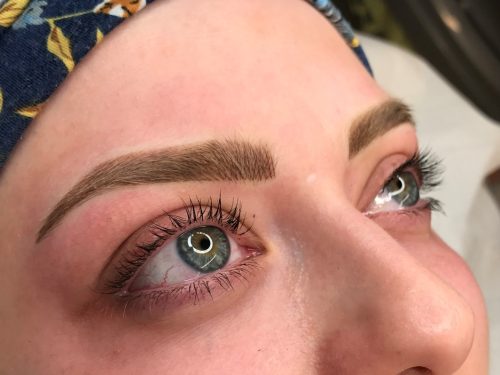
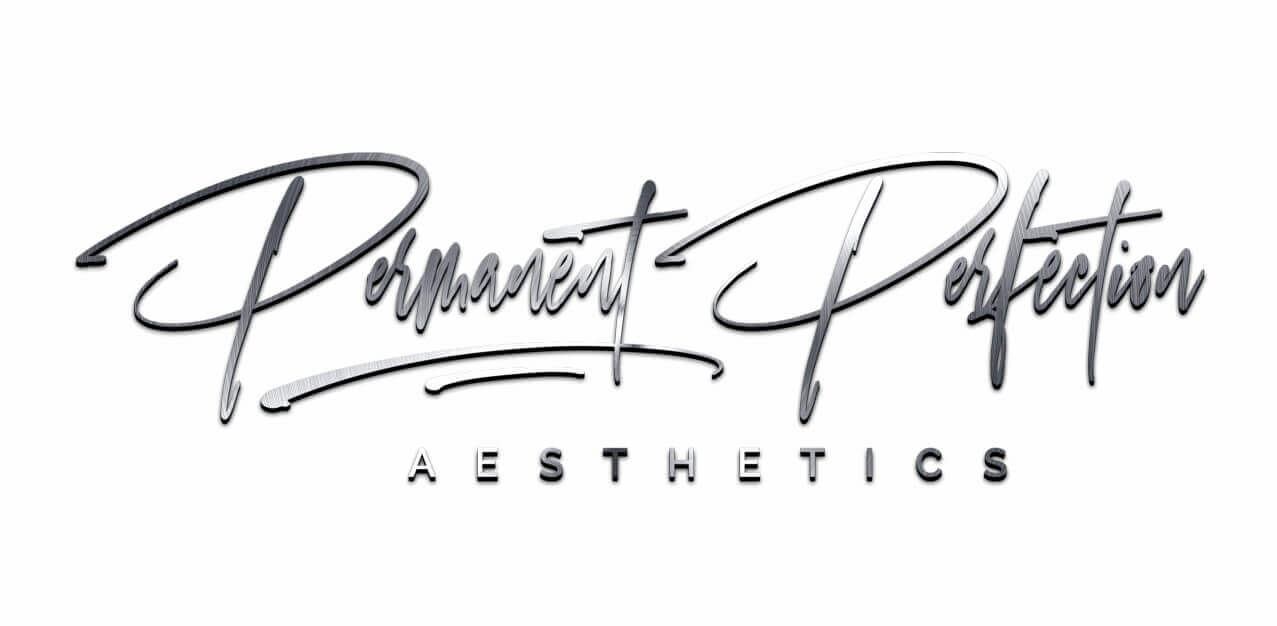
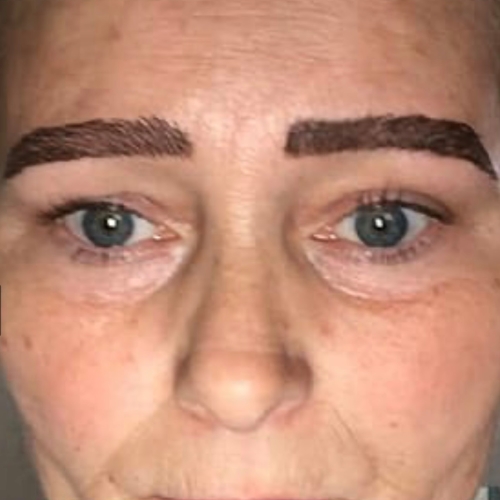
Recent Comments